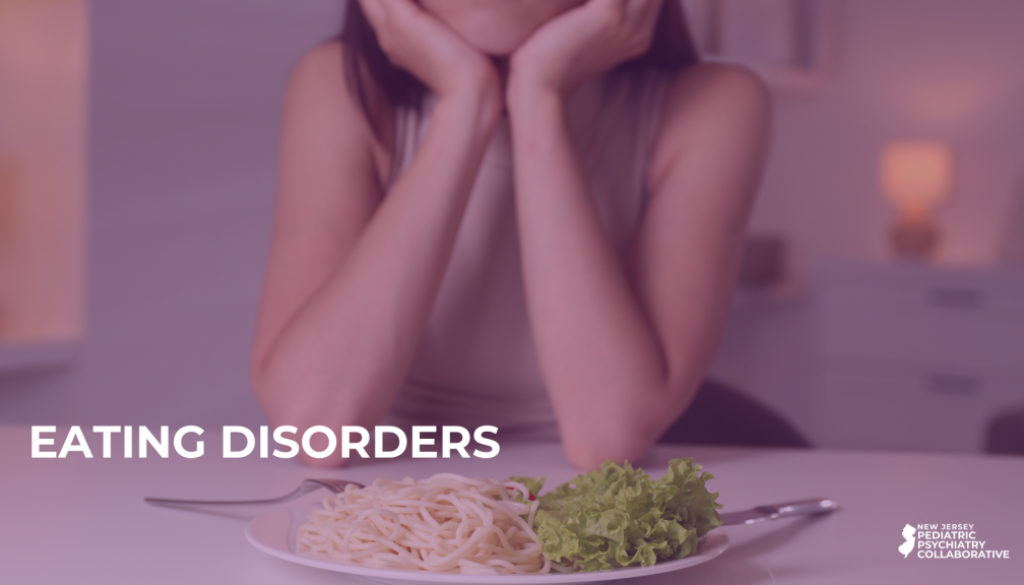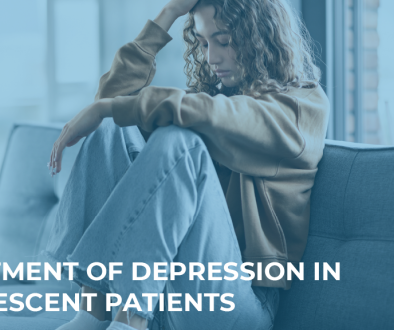Eating Disorders
Eating disorders are serious psychiatric illnesses that affect both body and mind. When a child starts eating less, avoids family meals, or becomes fixated on “healthy eating”, many adults think it’s a passing phase, but it might be an early sign of an eating disorder. Eating disorders can emerge as early as elementary school. Eating disorders are not limited to teenage girls nor are they always about wanting to be thin. They can be present in children of any age, gender or body type. Some of the eating disorders described in the Diagnostic and Statistical Manual of Mental Disorders1are anorexia nervosa, bulimia nervosa, binge eating disorder and avoidant/restrictive food intake disorder (ARFID). Below are case examples.
Case 1–Anorexia Nervosa– restricting type
Patient A age 14, stopped eating lunch at school, began calorie– count, and exercised obsessively. She avoided pizza nights with her family and insisted that she felt healthier than ever. Patient otherwise was a high achiever in school with good grades. Over time, she lost weight, stopped getting her period and became irritable and withdrawn.
Case 2– Anorexia Nervosa– binge–eating/ purging type
Patient B age 16, was praised for her discipline and weight loss. But she binged late at night and used laxatives to “fix” it. Her weight looked normal, but she had low energy, missed school and felt ashamed
Key signs– intense guilt, fear of weight gain, restriction with binge/purge cycle
Case 3– Bulimia Nervosa
Patient J age 17, who was a school athlete and very social. But after large meals, he often disappeared to the bathroom. He later admitted to bingeing and vomiting several times a week, feeling out of control. He had normal BMI.
Key signs– recurrent bingeing with purging, emotional distress
Case 4– Binge–Eating Disorder
Patient N age 14, came home from school and regularly ate large quantities of snacks in secret to an extent of feeling disgusted by himself. No purging behaviors but he felt ashamed and out of control. His weight increased and he had increased anxiety.
Key signs– recurrent bingeing without purging, emotional distress
Case 5– Avoidant/Restrictive Food Intake Disorder
Patient M age 11, started to become a picky eater after a stomach virus. She refused almost everything but crackers and smoothies. It seemed to be that she avoided foods of different textures with a fear of gagging, choking or vomiting. She wasn’t worried about her weight, but she began to lose weight.
Key signs– significant restriction without body image dissatisfaction, often tied to sensory issues,
fear of vomiting/choking
General
- Weakness, fatigue and reduced energy
- Presyncope or syncope episodes
- Preoccupation with weight and appearance
- Rigid “healthy” or “clean” diet plans
- Secrecy around food choices and eating behaviors
- Rigid exercise routines
Physical (Mostly seen in patients with Anorexia Nervosa or ARFID.)
- Changes in weight, height and BMI on growth chart– notice any fluctuations or inability to meet age–appropriate standards
- Gastrointestinal – constipation, abdominal pain, nausea, frequent heartburn
- Cardiorespiratory – heart palpitations, bradycardia at rest, dyspnea, edema
- Endocrine – menstrual irregularities, bone fractures, hypoglycemia
- Dermatological – lanugo, hair loss, brittle hair and nails, calluses on knuckles or back of hands (seen in patients with bulimia)
- Poor dentition especially in patients dealing with bulimia
- Neurological– seizures
- Depression or anxiety symptoms
- Mood swings
- Memory loss
- Insomnia
- Substance Use
- Create a safe environment to talk about food and bodies. Avoid weight related comments and emphasize body respect and health over appearance. Encourage open dialogue about food, feelings and identity.
- Model a balanced relationship with food. Eat together when possible.
- Trust your gut. If your child’s relationship with food or their body feels “off”, bring it up with your child.
- Partner early with a pediatrician or mental health professional.
Author Profile:


National Eating Disorders Association
FEAST– Families empowered and supporting treatment of eating disorders
Sick Enough by Dr. Jennifer Gaudiani
References
1. American Psychiatric Association. Diagnostic and Statistical Manual of Mental Disorders.
DSM–5–TR. American Psychiatric Association Publishing; 2022.
doi:10.1176/appi.books.9780890425787
2. Eating Disorders: A Guide to Medical Care– AED Report 2021. Academy for Eating Disorders




